Overview
The article titled "10 Key Steps for Custom Retail Software Development Success" focuses on essential strategies for achieving success in developing customized software solutions tailored for the retail sector. Understanding unique business requirements and engaging stakeholders are critical steps that lead to tailored applications, enhancing operational efficiency and customer satisfaction.
These strategies ultimately enable retailers to thrive in a competitive environment. By prioritizing these elements, businesses can ensure their software solutions not only meet but exceed expectations, driving success in the retail landscape.
Introduction
In a rapidly evolving retail landscape, the demand for custom software solutions is at an all-time high. Retailers encounter unique challenges, from managing inventory to enhancing customer engagement, and tailored software emerges as the key to unlocking operational efficiency and driving sales. Yet, as businesses endeavor to implement these solutions, they often face significant obstacles, such as technology integration and user experience design.
How can retailers adeptly navigate these complexities to ensure their custom software development is not only successful but also future-proof?
SDA: Tailored Custom Software Development for Retail Success
SDA stands at the forefront of delivering custom software solutions tailored specifically for the commerce sector, effectively addressing critical challenges such as inventory management, customer engagement, and sales analytics. By developing bespoke applications, SDA significantly enhances operational efficiency and drives sales, empowering retailers to thrive in an increasingly competitive landscape.
The integration of , including machine vision and data capture systems, plays a pivotal role in streamlining processes and enhancing data accuracy. Remarkably, 70% of retailers have automated their data capturing processes, which has led to a substantial reduction in manual errors and a marked improvement in operational efficiency. Furthermore, 42% of merchants worldwide have adopted machine/camera vision technology, underscoring the importance of these advancements in commercial operations.
This unwavering commitment to merging strategy, technology, and design enables businesses to leverage innovative digital solutions that cater to their unique needs. As the commerce sector continues to evolve, the necessity for customized applications becomes increasingly evident, with a growing emphasis on hyper-personalized client experiences and optimized supply chain operations.
By 2025, trends such as augmented reality—currently utilized by 31% of merchants globally—and advanced data analytics are poised to redefine commerce application development. It is essential for businesses to adopt tailored solutions that not only meet current demands but also anticipate future challenges. Nevertheless, retailers must navigate significant hurdles in AI adoption, including regulatory compliance and client acceptance, which remain pressing concerns within the industry.
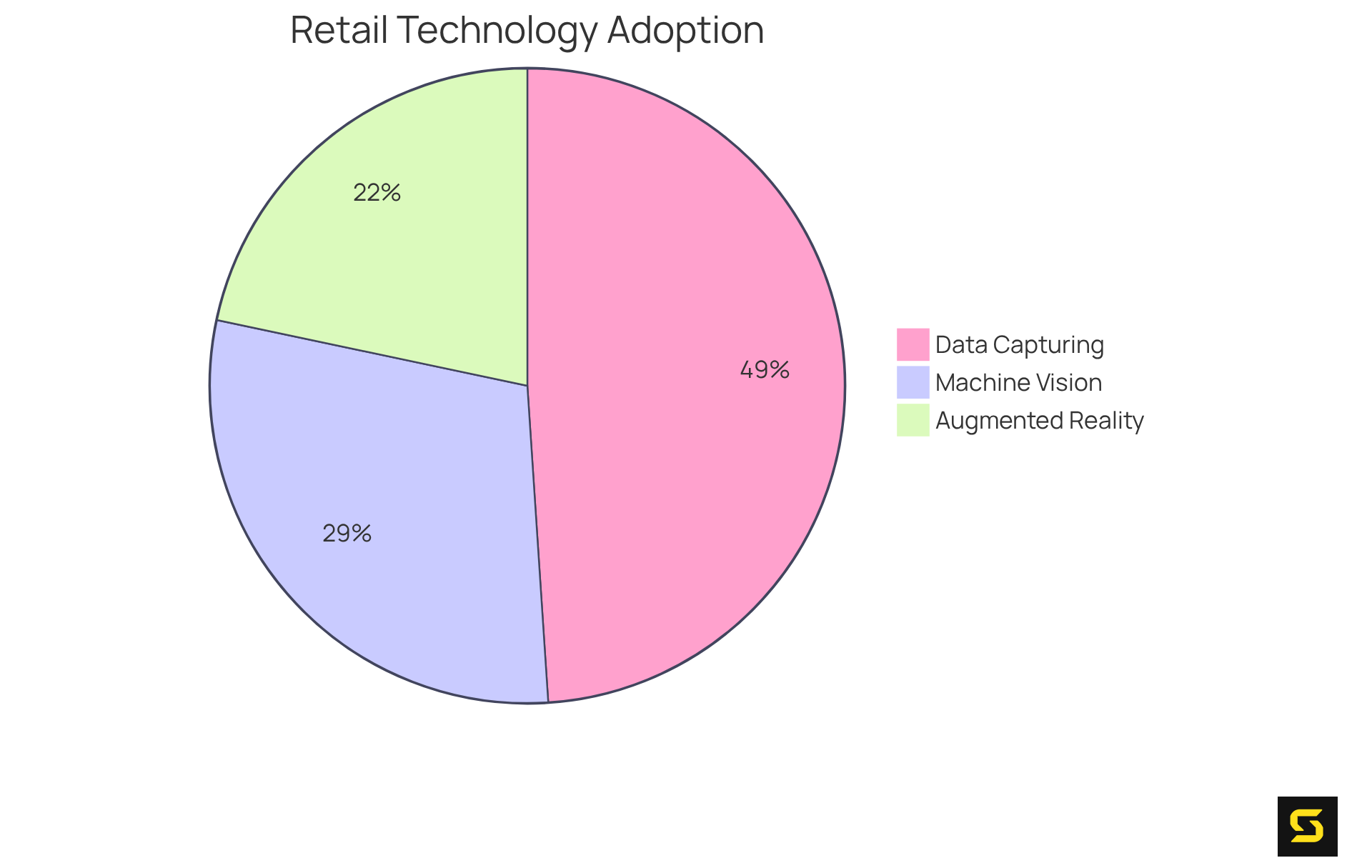
Identify Unique Retail Business Requirements
Recognizing the distinct needs of a commercial enterprise is a crucial first step in application development. Engaging stakeholders—employees, customers, and management—provides invaluable insights into their pain points, operational workflows, and expectations. Workshops and interviews facilitate a , ensuring that the development process is informed by real-world experiences. This collaborative approach not only enhances the relevance of the final product but also fosters a sense of ownership among stakeholders, which is vital for successful implementation.
As industry leaders assert, efficient stakeholder involvement can significantly improve project outcomes, aligning technological solutions with the specific requirements of the commercial environment. Companies that actively engage with stakeholders are 30% more likely to succeed with new products, underscoring the critical role of stakeholder involvement. Conversely, a lack of a clear engagement strategy can lead to misunderstandings and misalignment, ultimately jeopardizing project success.
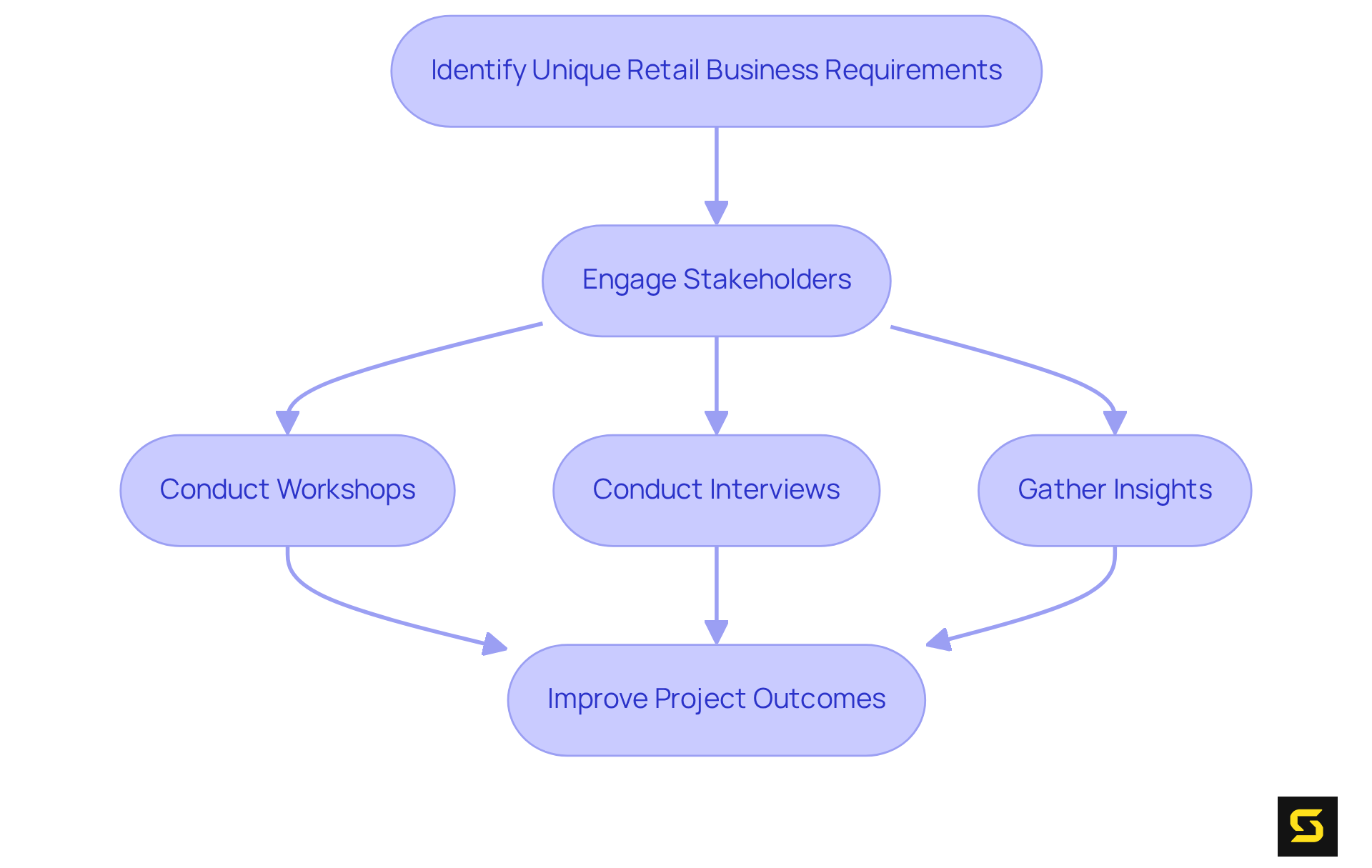
Select the Right Technology Stack for Scalability
Selecting the appropriate technology stack is paramount for the success of custom application development in the retail sector. Retail businesses must prioritize scalability, performance, and integration capabilities in custom retail software development when choosing their technologies. Frameworks like React and Angular significantly enhance user experience, while backend technologies such as Node.js and PHP are essential for ensuring scalability.
In 2022, a striking 94% of companies adopted cloud computing tools, underscoring the industry's shift towards scalable solutions that bolster operational efficiency. As Samir Bhimbha, Founder & CEO of Pixlogix Infotech Pvt. Ltd., aptly states, "Choosing the right technology stack for your project is a pivotal decision that can determine its success or failure."
SDA's extensive expertise across various technologies ensures that the selected stack not only addresses current operational needs but also supports future growth. With 70% of companies investing in , making informed technology choices is vital for driving retail business growth and maintaining a competitive edge in the market.
To align your technology stack with your business goals, evaluate your current technologies against these criteria for scalability and performance.
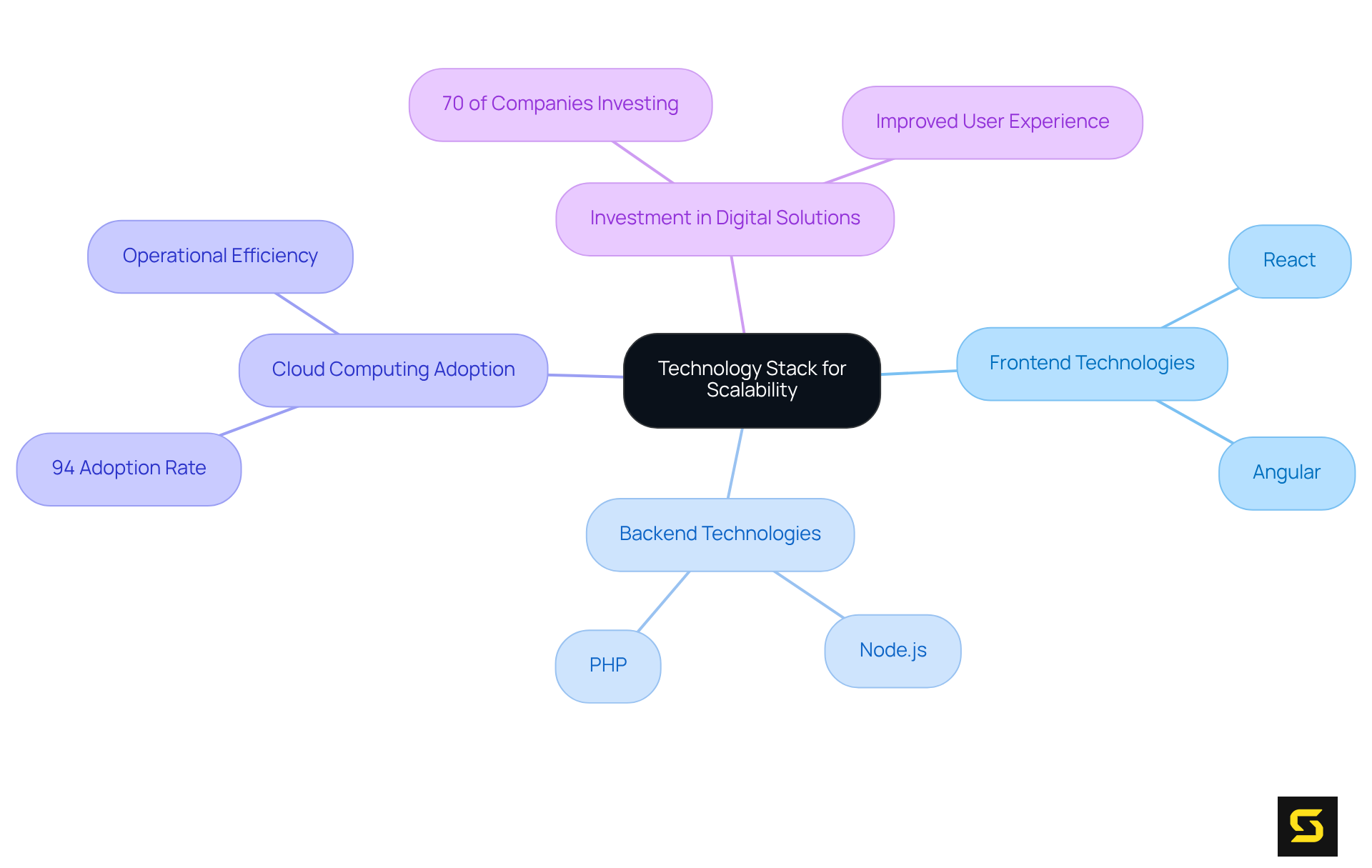
Ensure Seamless Integration with Existing Systems
To maximize the effectiveness of new applications, with existing systems, such as inventory management, CRM, and e-commerce platforms, is essential in custom retail software development. This integration facilitates real-time data sharing, significantly enhancing operational efficiency. By employing best practices in API development, SDA ensures that new software not only integrates smoothly but also complements the existing technology landscape.
Effective API development practices include:
- Using clear, noun-based resource names
- Implementing robust error handling
- Ensuring consistent data formats across applications
These strategies enhance operations and boost data precision and decision-making, ultimately resulting in a more agile and responsive commercial environment. As organizations increasingly prioritize integrations, custom retail software development becomes a critical factor in connecting disparate systems to achieve operational excellence and enhance client satisfaction.
Prospects are more likely to purchase products that integrate with their existing third-party applications, and clients with at least one integration are significantly more likely to renew their contracts. However, organizations face challenges in maintaining integrations, with 50% reporting issues due to discontinued applications or features.
As Lisa Schwarz notes, "Systems integration has wide-ranging benefits, including increased productivity and efficiency," highlighting the necessity of effective integration strategies.
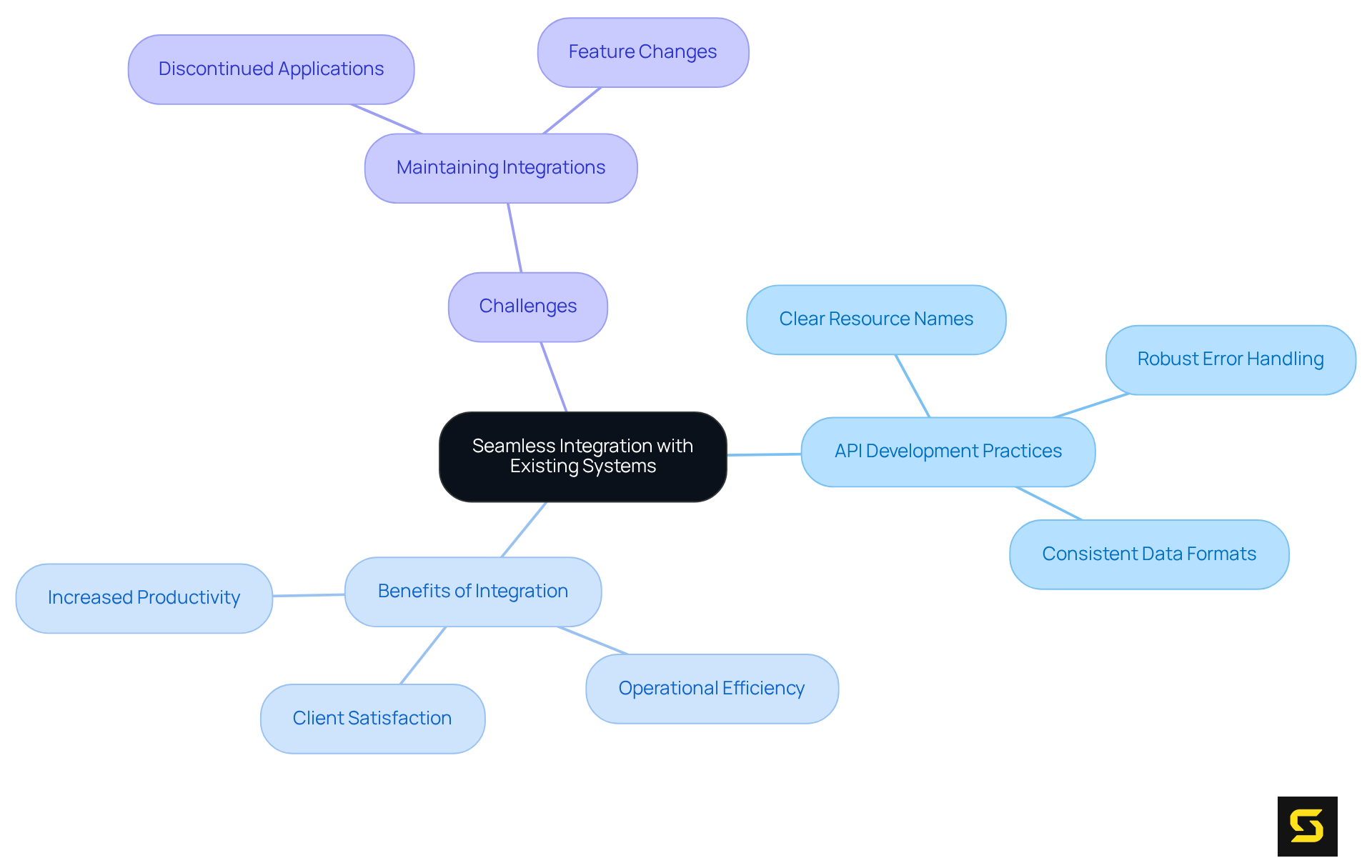
Prioritize User-Centric Design for Enhanced Engagement
A user-centric design approach is essential for custom retail software development that effectively engages customers. This involves:
- Crafting intuitive interfaces
- Ensuring seamless navigation
- Delivering personalized experiences
Studies indicate that , underscoring the critical need to prioritize UI/UX design. SDA emphasizes design principles that cater to user needs, resulting in applications that not only attract users but also foster repeat interactions and cultivate brand loyalty. Notably, clients who rate their experience a perfect 10/10 are six times more likely to repurchase, illustrating the direct correlation between exceptional design and client retention. Furthermore, clients who evaluate their experience a 10/10 spend 140% more, highlighting the financial impact of investing in quality UI/UX design. By integrating these principles, companies can significantly enhance client engagement and drive long-term success in the competitive marketplace through custom retail software development.
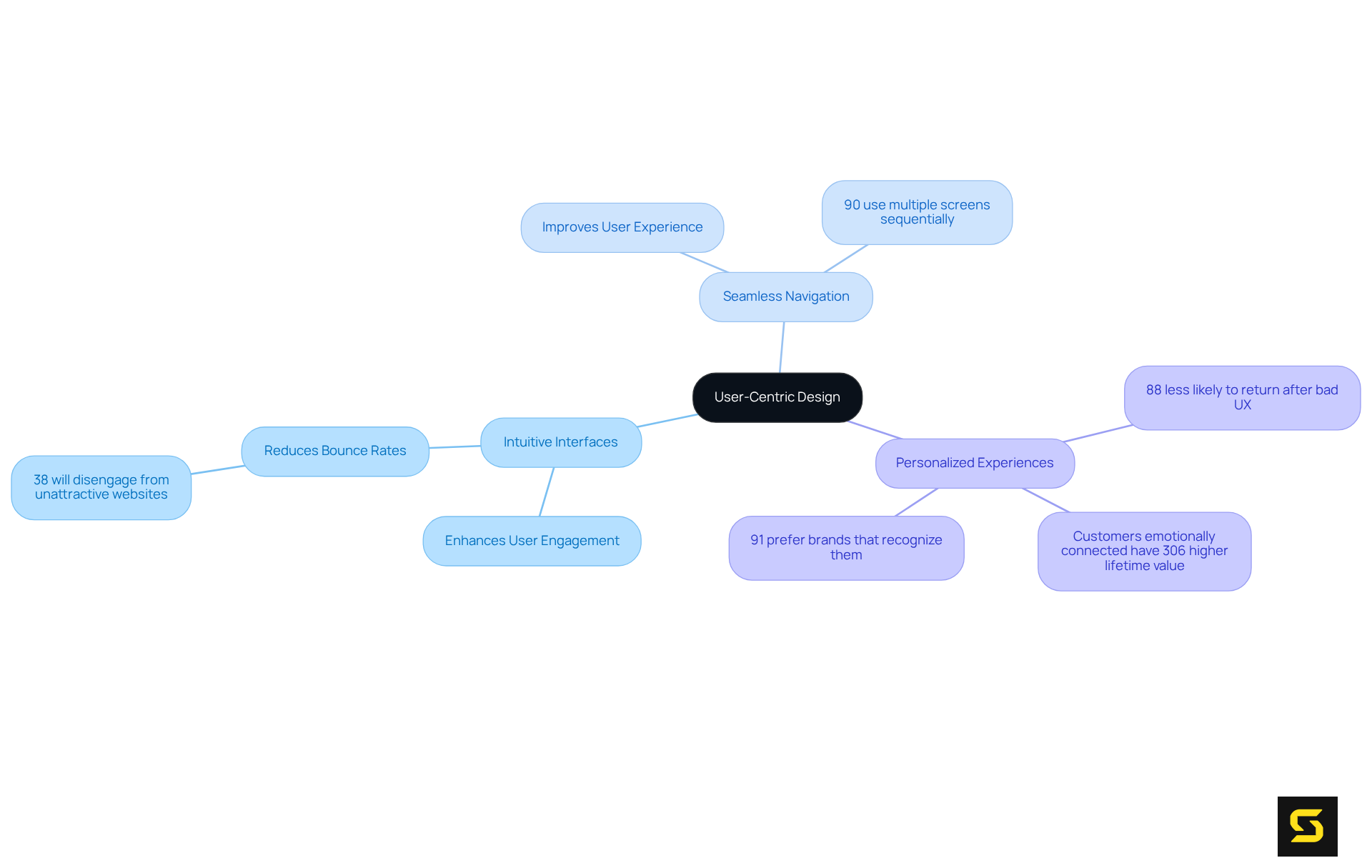
Implement Strong Security Measures for Data Protection
In the commerce sector, safeguarding customer data is paramount. With organized retail crime incidents surging by 26.5% in 2021, it is imperative to implement robust security measures, including:
- Encryption
- Secure payment gateways
- Regular security audits
to protect sensitive information. SDA integrates security throughout the software development lifecycle, ensuring that all applications comply with industry standards and regulations. This proactive approach, featuring real-time monitoring and customized security solutions, not only strengthens data protection but also cultivates customer trust, allowing clients to feel confident that their information is managed with the utmost care. As Bruce Schneier aptly states, "Security is not a product, but a process." By prioritizing security and maintaining a Written Information Security Plan (WISP), SDA establishes itself as a trustworthy ally in the technology landscape, effectively assisting businesses in navigating the complexities of data protection.
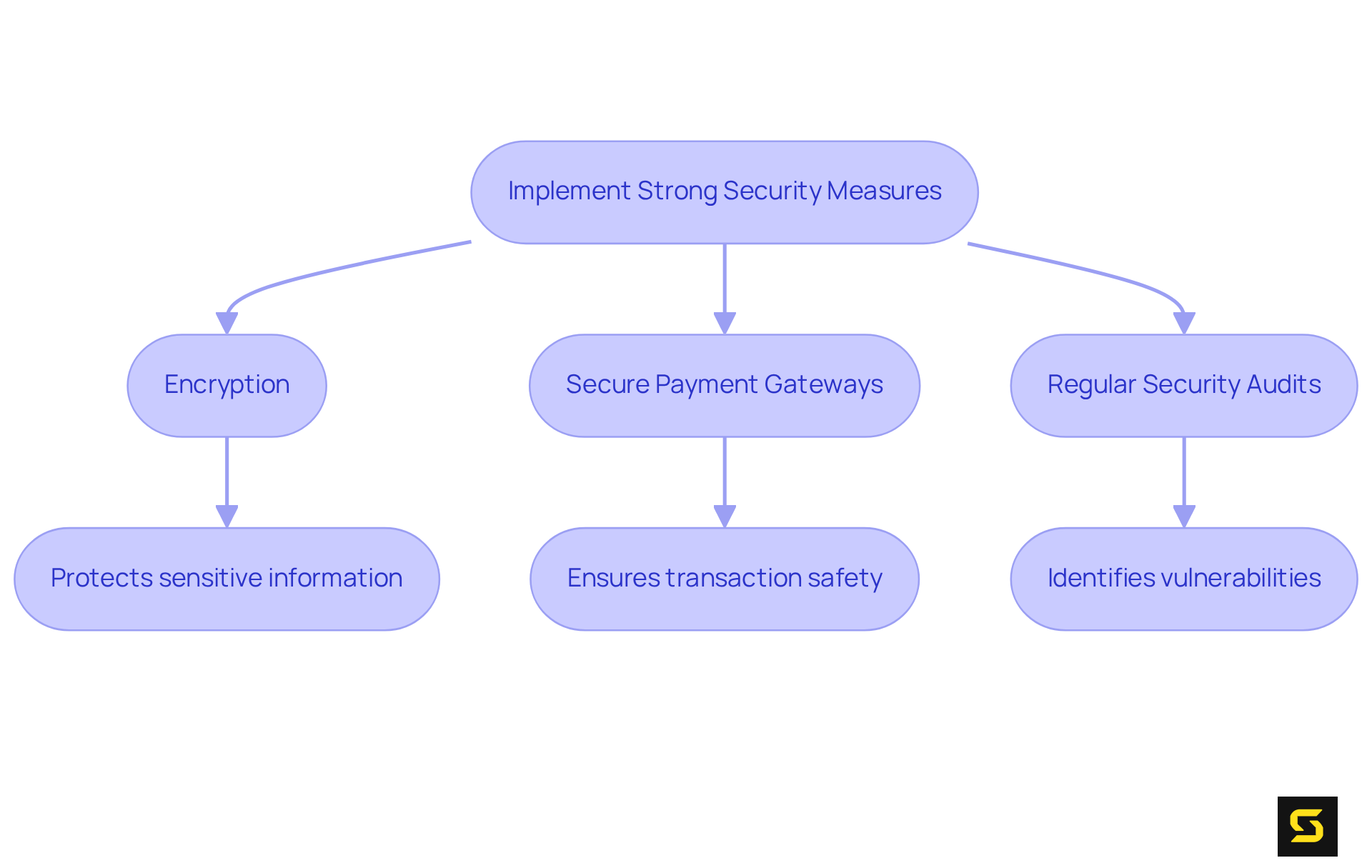
Conduct Comprehensive Testing for Quality Assurance
Comprehensive testing is indispensable in the software development lifecycle, especially for custom retail software development applications. SDA adopts a multifaceted approach that encompasses unit testing, integration testing, and acceptance testing. This rigorous methodology not only guarantees adherence to quality standards but also promotes the .
For instance, in the 'API Regression Testing Implementation' case study, comprehensive testing empowered the client to maintain service integrity and reliability, ultimately enhancing the experience for users. Furthermore, statistics reveal that 78% of organizations engage in test automation for regression testing or functional tests, highlighting the critical nature of comprehensive testing within the industry.
By addressing these challenges prior to launch, SDA significantly improves the user experience and mitigates the risk of complications post-launch. Such extensive testing is vital for achieving a successful deployment of custom retail software development, which in turn boosts the overall efficiency and reliability of commercial solutions. Additionally, as the testing landscape evolves, integrating emerging trends such as AI in evaluation can elevate efficiency and effectiveness, making it crucial for SaaS Product Owners to stay informed and adaptable.
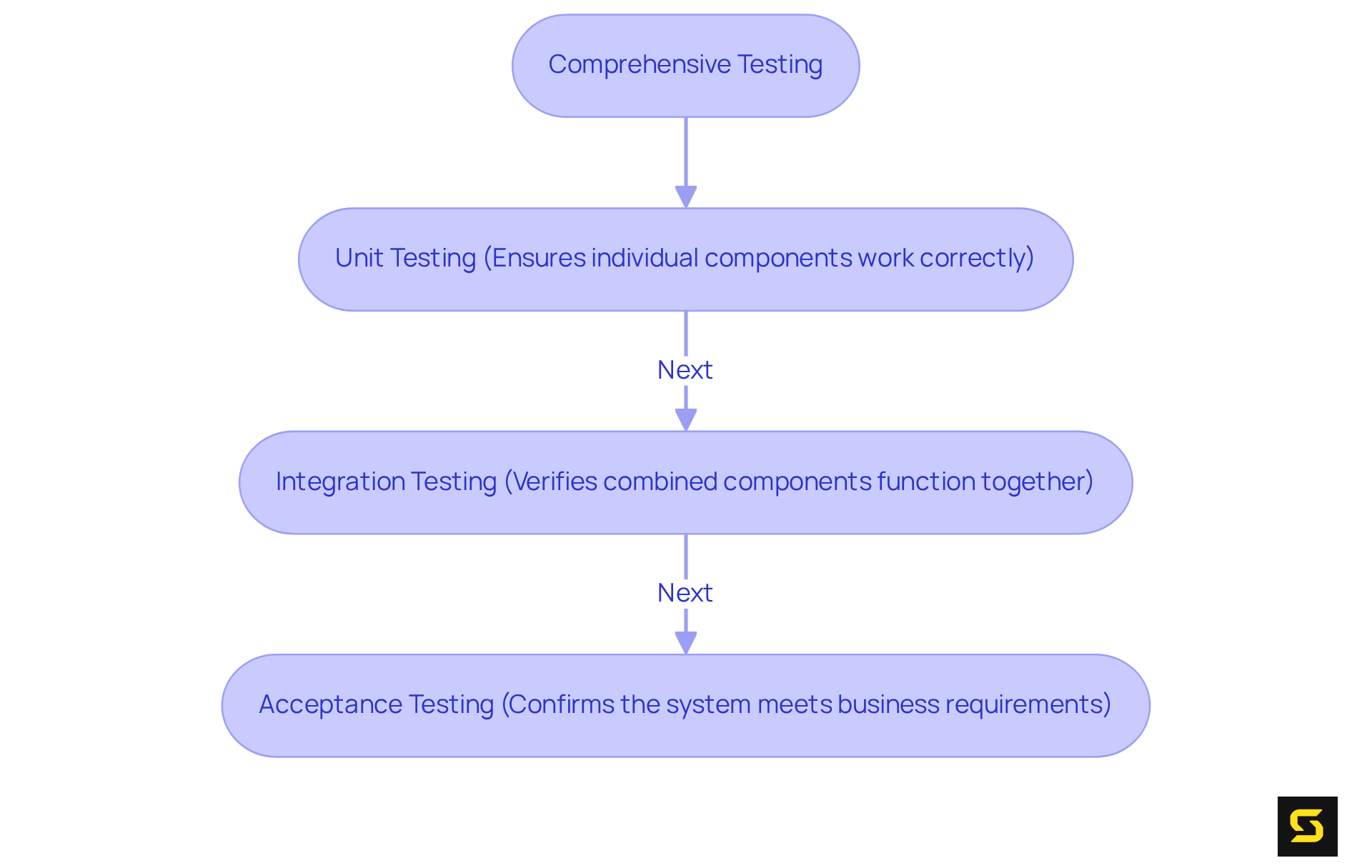
Plan for Ongoing Support and Maintenance
Effective planning for ongoing assistance and upkeep is crucial for the longevity of commercial applications. SDA offers comprehensive post-launch support services, encompassing regular updates, bug fixes, and performance monitoring. This proactive approach not only ensures that the system remains aligned with the evolving needs of the business but also enables it to adapt seamlessly to shifts in the retail landscape. By prioritizing maintenance, businesses can significantly enhance client satisfaction and operational efficiency, ultimately fostering loyalty and driving growth.
Frequent updates are essential; they ensure the program adheres to industry standards while minimizing security threats that can lead to considerable financial losses if neglected. Notably, firms that actively pursue client feedback are 20% more likely to retain customers, and 70% of program modifications made in response to client input lead to enhanced productivity. This underscores the importance of integrating client insights into continuous development.
Furthermore, investing in post-launch support can reduce maintenance costs by up to 40%. A case study demonstrated a 30% reduction in maintenance costs related to bug fixes, showcasing the financial advantages of a structured maintenance plan. In summary, a commitment to ongoing support not only safeguards the system's integrity but also enhances its value in a competitive market. Regularly is imperative for maintaining competitiveness.
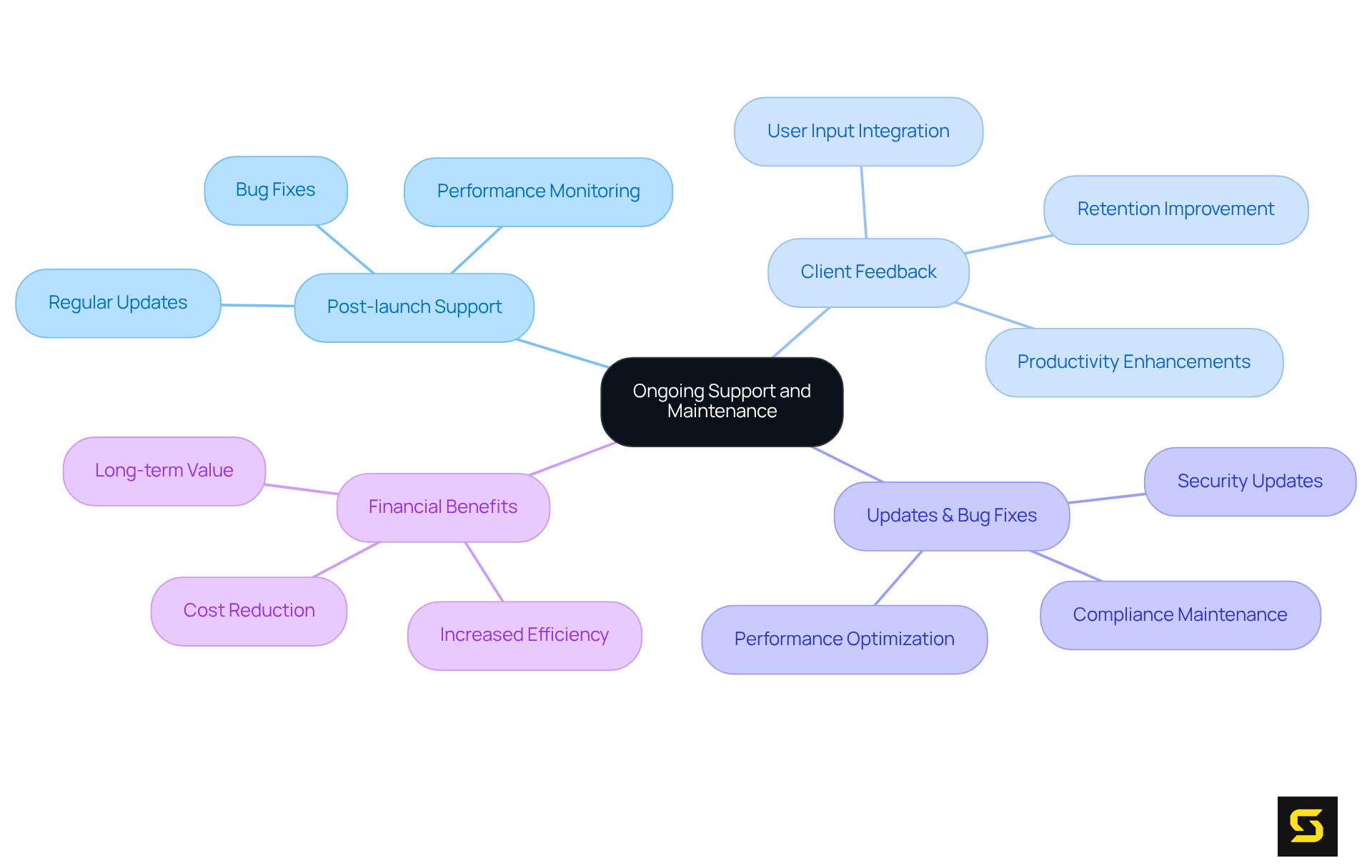
Gather User Feedback for Continuous Improvement
Collecting client feedback is essential in the application development lifecycle, particularly for custom retail software development. SDA firmly advocates for retailers to actively seek consumer insights through diverse methods such as:
- Surveys
- Interviews
- Usability testing
These methods not only capture experiences but also unveil preferences that can direct ongoing software enhancement. Notably, products that involve participants during their development process experience a 30% higher retention rate. Furthermore, companies that prioritize client engagement observe a 20% increase in retention rates, underscoring the critical importance of integrating feedback.
Usability testing can reveal approximately , as reported by the Nielsen Norman Group, enabling developers to address issues prior to launch. By systematically collecting feedback, retailers can ensure their custom retail software development is aligned with customer needs, ultimately enhancing satisfaction and driving engagement.
Consistently applying feedback systems can yield a 20% rise in satisfaction among users, as highlighted by a Forrester study that demonstrates focusing on participant pain points can lead to comparable outcomes. Additionally, being transparent about how consumer insights are integrated fosters trust and strengthens the connection between retailers and their clients.
The case study on 'Client Feedback in Software Development' illustrates that actively seeking and incorporating client input can result in more successful products. Overall, prioritizing insights from users in the custom retail software development process is vital for achieving sustained growth and satisfaction.
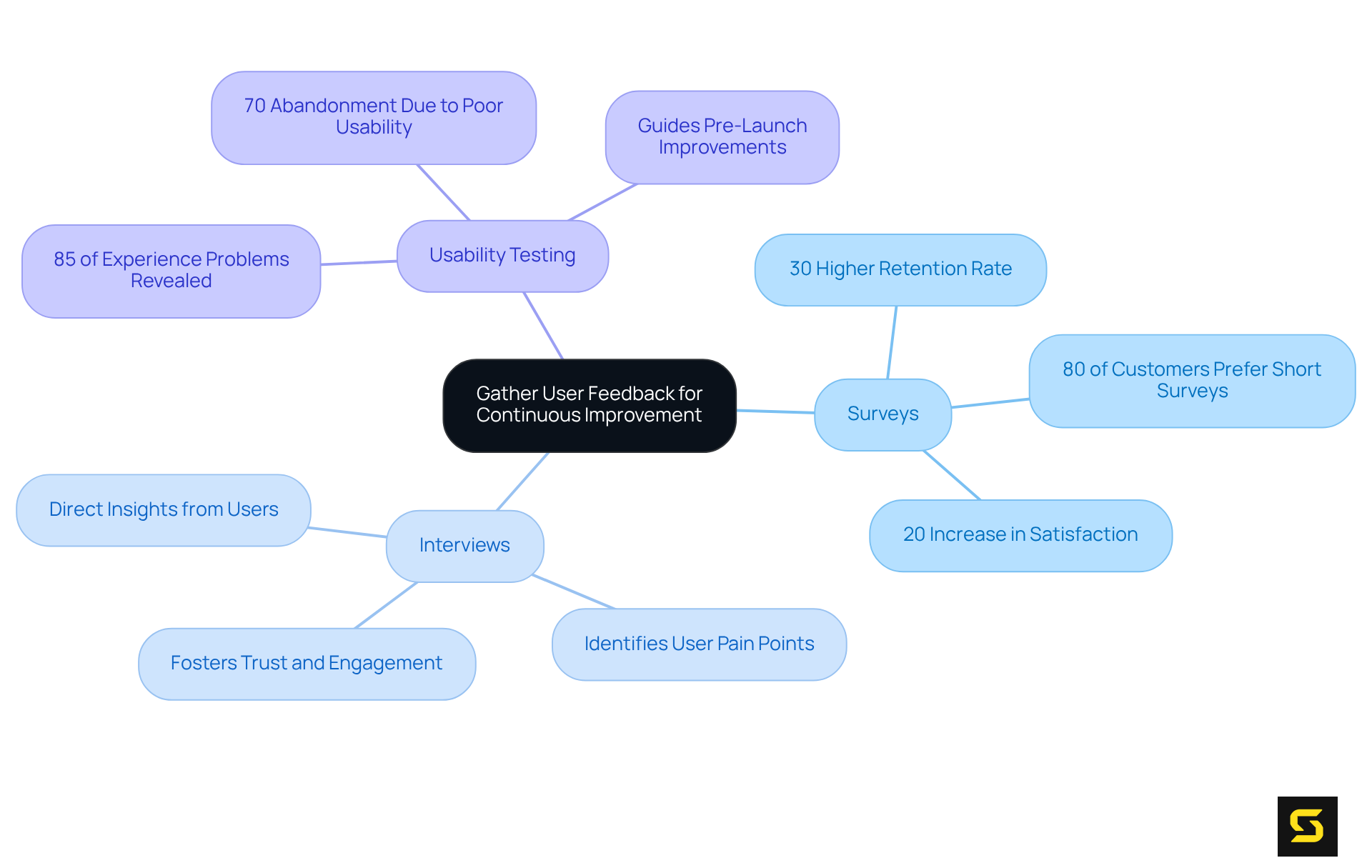
Measure Success with Key Performance Indicators (KPIs)
To assess the success of custom retail software development, establishing and tracking Key Performance Indicators (KPIs) is essential. These metrics encompass user engagement rates, sales conversions, and client satisfaction scores. Elevated engagement rates are frequently linked to enhanced sales conversions and improved satisfaction scores, making them critical for evaluating application performance. For instance, predictive analytics has facilitated pre-emptive customer service, significantly reducing failures that lead to customer escalations.
SDA employs a data-driven approach to analyze these KPIs, empowering retailers to measure the impact of their custom retail software development on overall business performance. A notable trend in retail technology is the shift towards personalized user experiences, which has been proven to significantly enhance engagement rates. Retailers leveraging analytics to customize their offerings can witness a substantial improvement in client retention and loyalty.
Moreover, KPIs such as Average Handling Time (AHT) and First Contact Resolution Rate (FCR) provide valuable insights into operational efficiency. Lower AHT translates to quicker resolutions, while a high FCR signifies efficient service. By concentrating on these metrics, SDA equips retailers to make informed decisions that foster continuous improvement and innovation in their custom retail software development solutions. A compelling case study on reducing Time-to-Resolution for Field Support Tickets illustrates how the implementation of machine learning models to predict potential failures resulted in improved resolution times and heightened customer satisfaction.
Ultimately, a robust not only aids in evaluating current performance but also serves as a guide for strategic planning regarding future developments in the retail sector. As one expert noted, "Sales analytics involves systematically analyzing and interpreting sales data and key performance indicators (KPIs) to improve sales strategies.
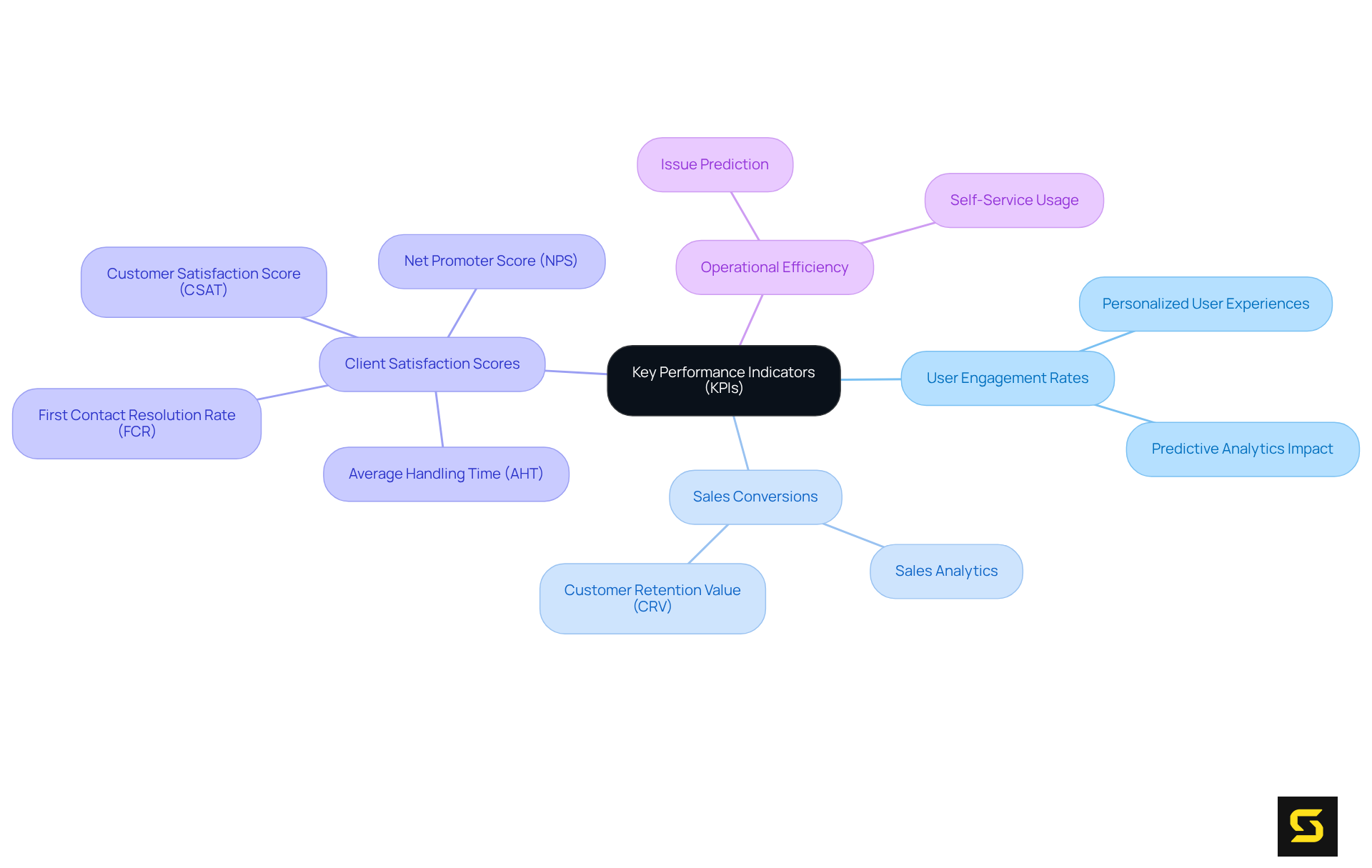
Conclusion
SDA's approach to custom retail software development underscores the necessity of tailored solutions that cater to the distinct needs of the retail sector. By harnessing advanced technologies and prioritizing user-centric design, businesses can significantly enhance operational efficiency, streamline processes, and ultimately drive sales. The demand for bespoke applications is emphasized by the rapidly evolving landscape of commerce, where personalized experiences and seamless integrations are essential for success.
Key strategies for achieving success in custom software development have been meticulously outlined. These encompass:
- Identifying specific business requirements through stakeholder engagement
- Selecting an appropriate technology stack for scalability
- Ensuring seamless integration with existing systems
- Prioritizing user-centric design
- Implementing robust security measures
- Conducting thorough testing
- Planning for ongoing support and maintenance
Gathering user feedback for continuous improvement and measuring success through key performance indicators further solidifies the foundation for sustained growth and customer satisfaction.
In conclusion, the journey toward successful custom retail software development is multifaceted, necessitating a strategic blend of technology, design, and ongoing support. Retailers are urged to adopt these best practices to not only tackle current challenges but also to anticipate future trends in the industry. By investing in tailored solutions and prioritizing customer engagement, businesses can position themselves for long-term success in an increasingly competitive market. The time to act is now—leveraging these insights can pave the way for innovative retail experiences that resonate with customers and drive business growth.
Frequently Asked Questions
What is SDA and what services do they offer for retail businesses?
SDA specializes in delivering custom software solutions tailored for the retail sector, addressing challenges such as inventory management, customer engagement, and sales analytics to enhance operational efficiency and drive sales.
How has automation impacted retailers according to the article?
Automation has significantly reduced manual errors and improved operational efficiency, with 70% of retailers automating their data capturing processes.
What advanced technologies are mentioned as important for retail operations?
The article highlights machine vision and data capture systems as pivotal technologies, with 42% of merchants adopting machine/camera vision technology.
Why is stakeholder engagement important in application development?
Engaging stakeholders—employees, customers, and management—provides insights into their needs and expectations, leading to a more relevant final product and a higher likelihood of project success.
What impact does stakeholder involvement have on project outcomes?
Companies that actively engage with stakeholders are 30% more likely to succeed with new products, emphasizing the importance of clear engagement strategies.
What factors should be considered when selecting a technology stack for retail software development?
Retail businesses should prioritize scalability, performance, and integration capabilities when choosing their technology stack to ensure the success of custom application development.
What technologies are recommended for enhancing user experience and scalability?
Frameworks like React and Angular are recommended for enhancing user experience, while backend technologies such as Node.js and PHP are essential for scalability.
What trend in technology adoption was noted in 2022?
In 2022, 94% of companies adopted cloud computing tools, indicating a shift towards scalable solutions in the retail sector.
How can businesses ensure their technology stack aligns with their goals?
Businesses should evaluate their current technologies against criteria for scalability and performance to align their technology stack with their business goals.





